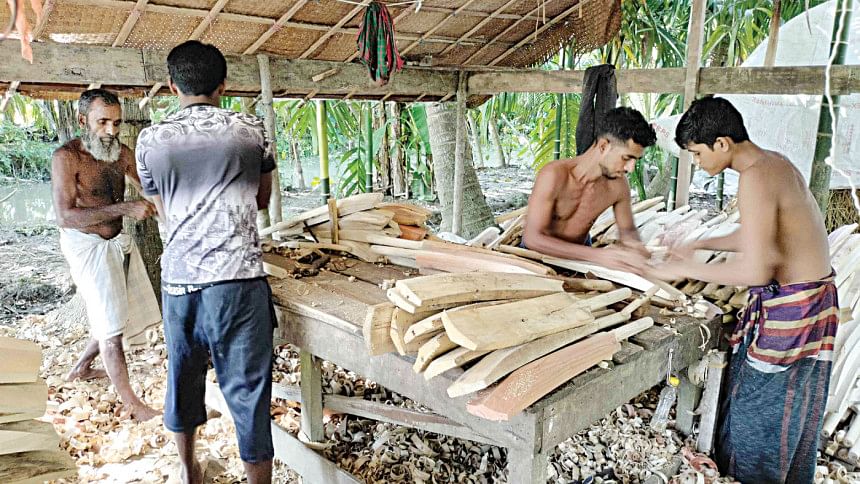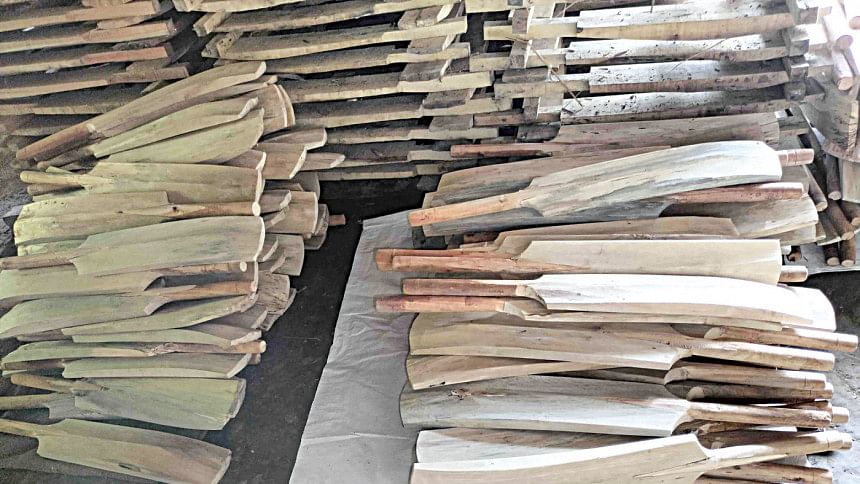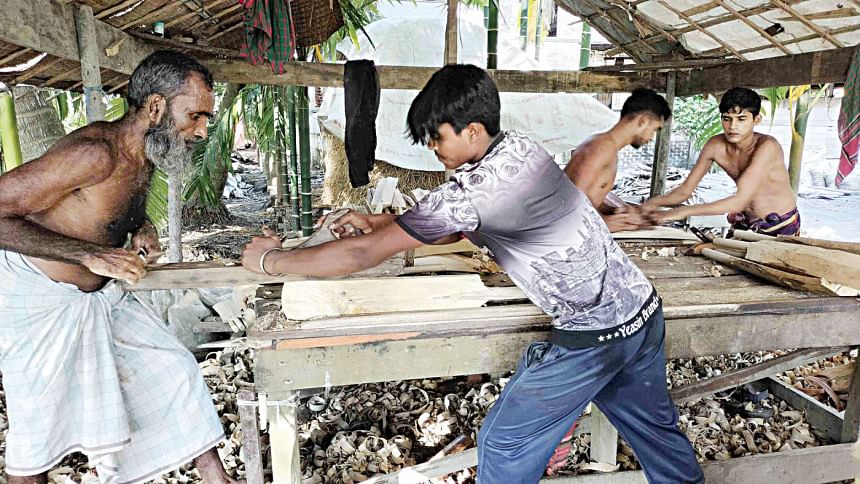Cricket bat-makers hope to cash in on World Cup fever

Cricket bat-makers in Pirojpur's Nesarabad upazila have gotten to work ahead of schedule with next month's Cricket World Cup just around the corner, and they are hopeful of good sales during the showpiece event in neighbouring India.
Normally, bat-makers start operations around October, when the dry season begins and grounds are suitable for cricket.
But with the World Cup also starting from October 5, sales expectations this year are heightened and bat-makers have started full-swing production more than a month ahead of their usual schedule.
"All year round we prepare cricket bats through a slow process, aiming to start sales during the dry season, targeting the peak season in October. But this year, our business has increased. We expect good sales during the World Cup," said bat-maker Rafikul Islam, adding that buyers from different areas were already in contact with him.
With the World Cup also starting from October 5, sales expectations this year are heightened and bat-makers have started full-swing production more than a month ahead of their usual schedule
"We expect to have the cricket bats available on the market within ten days," said bat-maker Md Saiful Islam.
Bat-makers said their businesses had remained suspended for the past two years in the wake of the Covid-19 pandemic, with only a handful of the 200-plus factories in the area remaining operational.
"During that time, many factories were forced to shut down," said factory owner Md Jahangir Hossain.
This had forced more than 2,000 people involved in the business into unemployment, he added.

But even those shuttered factories have resumed production ahead of the World Cup, hoping to make up for a portion of their losses over the past couple of years by cashing in on the hype surrounding the event.
As a result, factory owners have had to employ even more workers as they look to scale production to meet demand. This has led to a labour shortage in the sector as full-swing production has begun at nearly every factory.
Different sizes of cricket bats, ranging from those for small children to those for adults, are produced at Uribuniya, Binna, Khejurbari, Jilbari and Katakhali villages in the Boldia union of the Nesarabad upazila in the southwestern district.
Boldia is a well-known hub of bat-makers and has been meeting a great portion of the demand for cricket bats across the country for the past three decades.
Collectively, factories used to churn out 20 lakh bats during the main season running from October to March before the pandemic. Their clients included sports accessories wholesalers and retailers across Bangladesh as well as corporate offices.
Factory owner Atikul Islam said that all factory owners had collected raw materials after taking loans from different lenders, including local NGOs. "Now it's time to prepare cricket bats alone."
After preparation, cricket bats are transported to different parts of the country, including Dhaka and Chattogram by trucks, before retail outlets package them as required.

"This year, each factory expects sales of cricket bats to cross Tk 20 lakh," said factory owner Kamrul Hasan.
Owing to increased factory activity, workers do not have a single moment to spend idly.
"We work on a piece-rate basis," said worker Md Nurul Haque, adding that workers would come early in the morning and continue working till late in the evening.
Apart from hosts India, the teams that will compete at the showcase event are Afghanistan, Australia, Bangladesh, England, New Zealand, Pakistan, South Africa, Sri Lanka, and the Netherlands.

 For all latest news, follow The Daily Star's Google News channel.
For all latest news, follow The Daily Star's Google News channel. 








Comments